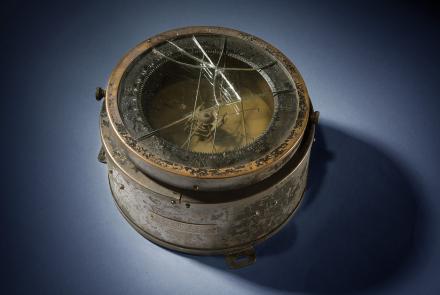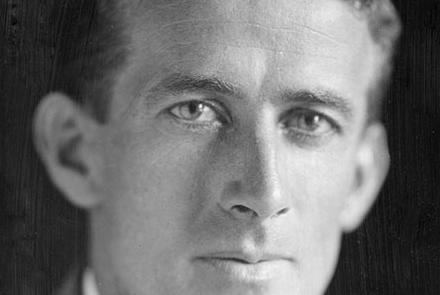The Winnie Mae, a special Lockheed Model 5C Vega flown by famed aviator Wiley Post, completed two around-the-world record flights and a series of special high-altitude substratospheric research flights. It was named for the daughter of its original owner, F. C. Hall, who hired Post to pilot the plane.
With the consent of his employer, Post entered the Winnie Mae in the National Air Races and piloted the plane to the first of its records, now inscribed on the side of its fuselage: “Los Angeles to Chicago 9 hrs. 9 mn. 4 sec. Aug. 27, 1930.”
On June 23, 1931, Post began an around-the-world flight to try to bring prestige to the United States by shattering the previous 21-day record set by the German airship Graf Zepplin. Post lacked training in most navigational techniques and selected Harold Gatty as his navigator. The Tasmanian-born Gatty was the chief instructor for the Weems System of Navigation and regarded by many as the most capable air navigator in the nation. Gatty utilized the tools and techniques of the Weems System for the flight, including his prototype drift meter, which became highly successful in later forms. Gatty occupied the main cabin, and Post had a hatch installed in the cabin ceiling behind the wing spar, so Gatty could make his celestial observations.
On July 15, 1933, Post left New York. Closely following his former route but making only 11 stops, he circled the world in 7 days, 18 hours, and 49 minutes. Post knew no more about navigation in 1933 than in 1931, so his decision to go solo without a navigator was far riskier. Fortunately, both the radio compass and autopilot worked flawlessly, and he completed the flight with minimal trouble.
Post next modified the Winnie Mae for long-distance, high-altitude operation. He recognized the need to develop some means of enabling the pilot to operate in a cabin atmosphere of greater density than the outside atmospheric environment. Because of its design, the Winnie Mae could not be equipped with a pressure cabin. Post therefore asked the B. F. Goodrich Company to assist him in developing a full-pressure suit for the pilot. Post hoped that by equipping the plane with an engine supercharger and jettisonable landing gear, and himself with a pressure suit, he could cruise for long distances at high altitude in the jetstream. On March 15, 1935, Post flew from Burbank, California, to Cleveland, Ohio, a distance of 2,035 miles, in 7 hours, 19 minutes. At times, the Winnie Mae attained a ground speed of 340 miles per hour, indicating that the airplane was indeed operating in the jetstream.
Wiley Post died shortly afterward in the crash of a hybrid Lockheed Orion-Sirius floatplane near Point Barrow, Alaska, on August 15, 1935. His companion, humorist Will Rogers, also perished in the accident. The Smithsonian Institution acquired the Winnie Mae from Mrs. Post in 1936.
During its high-altitude flight research, the Winnie Mae made use of a special tubular steel landing gear developed by Lockheed engineers Clarence L. “Kelly” Johnson and James Gerschler. It was released after takeoff by the pilot using a cockpit lever, thus reducing the total drag of the plane and eliminating its weight. The Winnie Mae would then continue on its flight and land on a special metal-covered spruce landing skid glued to the fuselage.
During these flights, Post wore the world’s first practical pressure suit, an important step on the road to human space travel. The suit was the third type developed by Post and Russell S. Colley of the B. F. Goodrich Company. It consisted of three layers: long underwear. an inner black rubber air-pressure bladder, and an outer contoured cloth suit. A pressure helmet was then bolted onto the suit. It had a removable faceplate Post could seal when he reached an altitude of 17,000 feet. The helmet had an oxygen system and could accommodate earphones and a throat microphone. The suit could withstand an internal pressure of 7 pounds per square inch. Bandolera-type cords prevented the helmet from rising as the suit was pressurized. A liquid oxygen container, consisting of a double-walled vacuum bottle, utilized the natural "boil off" tendencies of supercold liquid oxygen to furnish gaseous oxygen for suit pressurization and breathing purposes. This early full-pressure suit is the direct ancestor of full-pressure suits used on the X-15 research airplane and manned space voyages. The Winnie Mae, its jettisonable landing gear, and Post’s pressure suit are in the collection of the National Air and Space Museum.









